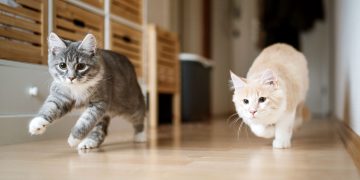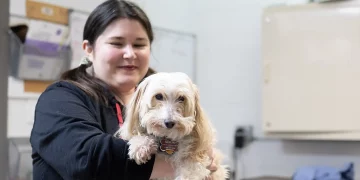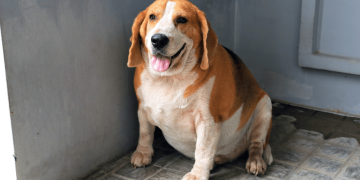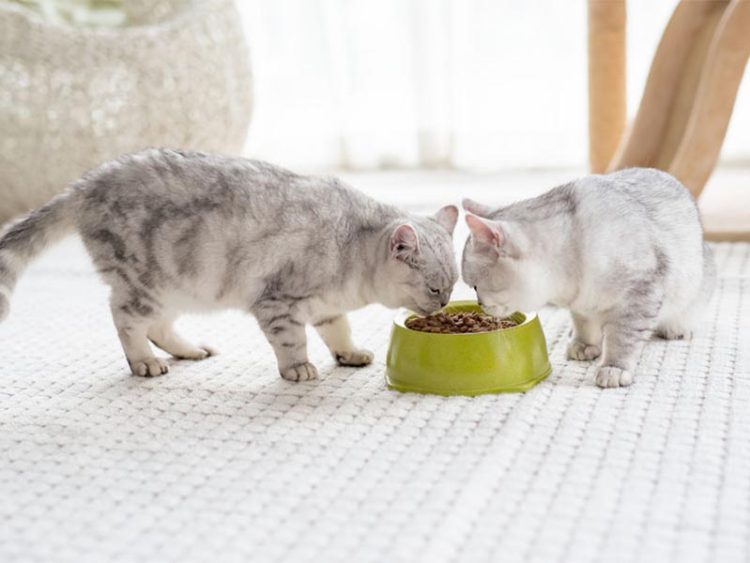Introduction:
As pet owners, one of our main responsibilities is ensuring the health and well-being of our furry companions. Pet obesity has become an alarming issue in recent years, with many pets facing weight-related health problems that can shorten their lifespan and lead to conditions such as diabetes, arthritis, and heart disease. The way we feed our pets plays a significant role in managing their weight, and choosing between different feeding methods is an essential factor.
The two primary feeding methods used by pet owners are scheduled feeding (also known as “portion control”) and free-feeding (leaving food out for pets to eat at their discretion). Both methods have their pros and cons, but when it comes to preventing pet obesity, one may be more effective than the other. This article will explore the differences between these two feeding strategies, their impact on pet obesity, and provide insights into how each method contributes to your pet’s overall health.
1. Scheduled Feeding: A Controlled Approach to Nutrition
Scheduled feeding refers to providing your pet with a set amount of food at specific times throughout the day. Typically, this method involves measuring out your pet’s daily food portion and dividing it into two or three meals, which are given at regular intervals.
Benefits of Scheduled Feeding:
- Weight Management: One of the key advantages of scheduled feeding is the ability to control your pet’s food intake more precisely. By portioning their meals, you can ensure they consume the correct amount of food for their age, size, and activity level, which helps to prevent overeating.
- Prevention of Overeating: In scheduled feeding, the pet’s food is only available at specific times, so they are less likely to eat out of boredom or habit. This reduces the risk of excessive calorie intake, which is a leading cause of obesity.
- Monitoring Portion Control: With scheduled feeding, you can carefully monitor your pet’s portion sizes, which allows you to track how much they’re eating and adjust their portions if needed to avoid weight gain. This also helps with feeding pets on specific diets if they have medical conditions like diabetes or obesity.
- Predictable Feeding Schedule: Pets thrive on routine, and having regular feeding times can help with training and reduce anxiety around food. It can also regulate their digestion, leading to fewer issues with overeating or digestive problems.
Challenges of Scheduled Feeding:
- Time Commitment: Scheduled feeding requires more attention and effort from pet owners, as meals need to be served at specific times throughout the day. For busy owners, this can sometimes be difficult to maintain consistently.
- Feeding Resistance: Some pets may resist scheduled feeding, especially if they are used to having food available all the time. It may take time to adjust to this structured eating pattern, and some pets may experience increased begging or frustration.
2. Free-Feeding: The Convenience of Access to Food at All Times
Free-feeding, on the other hand, involves leaving food out for your pet to eat whenever they are hungry. This method allows pets to access food at any time of the day, giving them the freedom to eat whenever they please. While free-feeding is often seen as a more convenient and less time-consuming option, it can have significant consequences on your pet’s weight management.
Benefits of Free-Feeding:
- Convenience: Free-feeding is more convenient for pet owners, as there’s no need to schedule feeding times or measure out portions. The pet can eat whenever it’s hungry, which can be easier for both owners and pets.
- Less Stress for the Pet: Some pets may find free-feeding less stressful, as they are not confined to specific meal times and can eat when they need to. This method may suit pets with higher energy levels that need frequent, smaller meals.
- Less Owner Involvement: For busy owners, free-feeding can be a way to ensure pets have food available without having to be present to serve meals at set times.
Challenges of Free-Feeding:
- Risk of Overeating: The most significant drawback of free-feeding is that it allows pets to eat whenever they want, often leading to overeating. This can be particularly problematic for pets that are not as self-regulated, such as those who eat out of boredom or those who have a tendency to overeat when food is readily available.
- Difficulty in Monitoring Intake: With free-feeding, it is much harder to track how much food your pet is eating. This makes it difficult to identify overeating, and owners may not notice weight gain or poor dietary habits until it becomes a more significant problem.
- Lack of Portion Control: Free-feeding eliminates the ability to measure portions accurately. This can lead to pets consuming more calories than they actually need, which directly contributes to weight gain.
- Increased Risk of Obesity: Since many pets do not regulate their food intake well when food is always available, free-feeding can easily contribute to obesity. Pets are more likely to overeat, which increases their risk of becoming overweight or obese, leading to associated health issues such as diabetes, arthritis, and reduced lifespan.

3. Pet Obesity: How Feeding Methods Affect Weight Control
Obesity is a major concern for pet owners, and it’s a condition that is becoming increasingly prevalent. According to the Association for Pet Obesity Prevention (APOP), nearly 60% of cats and 56% of dogs in the United States are classified as overweight or obese. The way you feed your pet plays a critical role in preventing obesity, and both scheduled feeding and free-feeding have different effects on weight management.
Impact of Scheduled Feeding on Obesity:
- Scheduled feeding helps maintain an optimal weight by controlling how much food your pet eats. By ensuring that your pet is only consuming the appropriate portion size, scheduled feeding reduces the chances of overeating and can help your pet maintain a healthy weight.
- Scheduled feeding encourages regular exercise because pets are fed at set times, and their body becomes accustomed to eating only at those times. This can help to create a more predictable routine that encourages an active lifestyle.
Impact of Free-Feeding on Obesity:
- Free-feeding can lead to a higher likelihood of obesity, as pets are allowed to eat as much as they want whenever they want. Without portion control, pets are more likely to overeat, leading to an increased risk of weight gain and obesity.
- Free-feeding can also disrupt the pet’s natural eating pattern, leading to unhealthy snacking habits. Pet owners may not notice their pets gaining weight until it becomes a health issue.
4. Which Feeding Method is Better for Preventing Pet Obesity?
While both feeding methods have their benefits, scheduled feeding is the most effective method for preventing pet obesity. Here’s why:
- Portion Control: Scheduled feeding gives you the ability to measure and monitor your pet’s food intake, ensuring they don’t consume more calories than they need. This helps prevent overeating and excessive weight gain.
- Predictable Meal Times: Having regular feeding times helps pets maintain a routine and prevents them from eating impulsively throughout the day.
- Encourages Healthy Habits: Scheduled feeding encourages pets to develop healthy eating habits and prevents them from eating out of boredom or anxiety, which can contribute to weight gain.
In contrast, free-feeding is not recommended for pets prone to obesity, as it makes it difficult to control portion sizes and monitor their food intake. Pets are more likely to overeat, leading to excessive calorie intake and increased risk of obesity.
5. Conclusion: A Balanced Approach
While scheduled feeding is the more effective approach for preventing obesity in most pets, every pet is unique, and some pets may be better suited to free-feeding, especially if they are highly active and can regulate their food intake. However, if your pet has a tendency to gain weight easily, struggles with portion control, or has a sedentary lifestyle, scheduled feeding is the safest and most reliable method for managing their weight.
If you are concerned about your pet’s weight, it’s always best to consult with your veterinarian. They can help you develop a tailored feeding plan and provide guidance on proper portion sizes to prevent obesity and promote long-term health. Whether you choose scheduled feeding or free-feeding, the key is to be mindful of your pet’s nutritional needs and ensure they receive a balanced diet that supports a healthy weight and lifestyle.























































